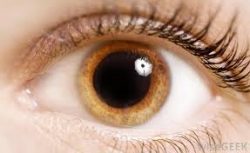Heroin is a powerfully addictive drug synthesized from the morphine content of opium. Because it is processed illegally with unknown chemical variants and methods, heroin potencies and dangers are unpredictable from dose to dose. It’s true, that heroin abuse can lead to dependence and addiction faster than most other drugs and as use progresses, it becomes nearly impossible for the user to hide the signs of heroin use.
Intoxication Signs of Heroin Use
Heroin users typically consume heroin via rapid delivery methods such as smoking, snorting, or intravenously injecting the drug. In these ways, the heroin reaches the brain much faster for the euphoric “rush” that heroin users are famously known to chase after. According to the DEA 2011 Resource Guide, “Because it enters the brain so rapidly, heroin is particularly addictive, both psychologically and physically.” As it flows through the bloodstream, the person experiences an intense sense of warmth and calming sensations with intoxication signs including:

Pinpoint pupils are an intoxication sign of Heroin use.
- Pinpoint pupils or avoiding eye contact
- “Nodding off” or appearing sleepy with heavy eyelids
- Flushed skin or excessively scratching and picking at skin
- Giddiness or overly enthusiastic, bizarre behaviors, mood swings
- Disoriented, lack of common sense, rambling or trailing off of conversations
- Slowed movement, lack of coordination
- Slurred or incoherent speech
Physical Signs of Heroin Use
Heroin is a central nervous system depressant that depresses breathing, heart rate, blood pressure, and nerve stimuli. Physical signs of heroin use may include:
- Sudden weight loss
- Physical health deteriorations, infections, diseases, and low immunity or organ malfunctions
- Overdose
- Withdrawal symptoms of fever, chills, runny nose, excessive yawning, bodily aches and pains, abdominal cramps, vomiting, diarrhea, extreme agitation, insomnia, hostility
- Bruises, scabs, burns, skin sores, infections, and abscesses
- Track and needle marks
Behavioral Changes that May Be Signs of Heroin Use
Heroin use alters brain functions, changes personalities, and causes a myriad of stress and psychological behaviors that may be recognized as signs of heroin use including:
- Disregard for appearance, poor eating, and sleep habits
- Isolation or lack of interest in work, family, school, social, or once enjoyable activities
- Changes in associates for ease of access to heroin
- Deceitful or secretive behaviors, stealing, excessive borrowing, or pawning assets to support habit
- Hostility or frequent mood swings
Indirect Signs of Heroin Use
Heroin users tend to leave a lot signs of heroin use around their environments including:
- Needles, caps, and spoons with burn marks on the bottom
- Aluminum foil or gum wrappers with burn marks
- Shoe laces, belts, rubber straps, or other “tie-offs” for IV use
- Bottled water or caps for diluting the heroin
- Straws, pipes, rolled up dollar bills, or empty pen cartridges for snorting or smoking
- Razor blades and credit or ID cards for crushing and snorting heroin
- Little plastic bags
- Cotton balls, Q-tips, and cigarette filters








